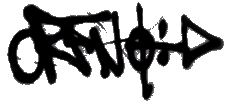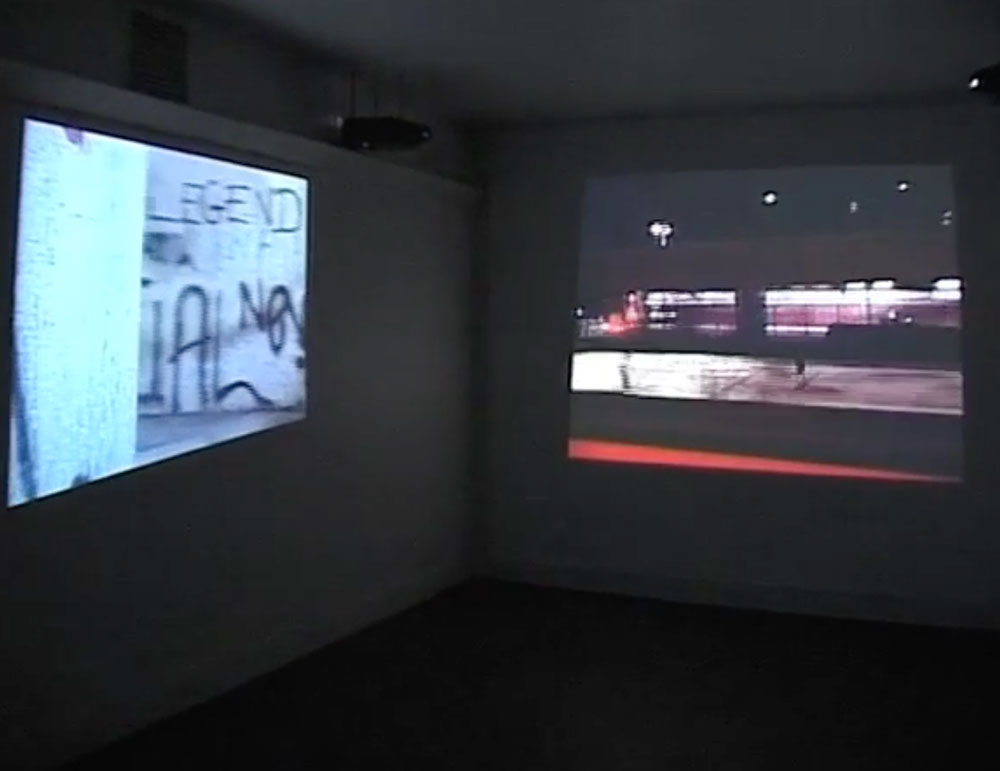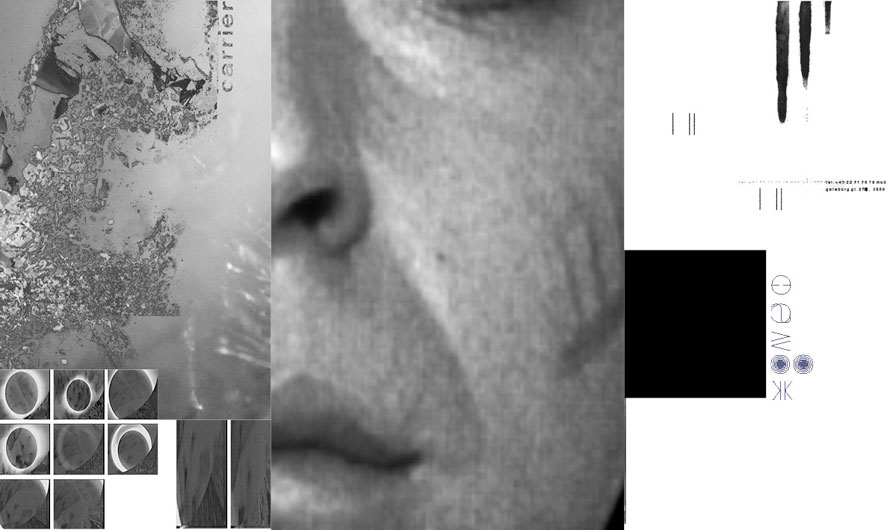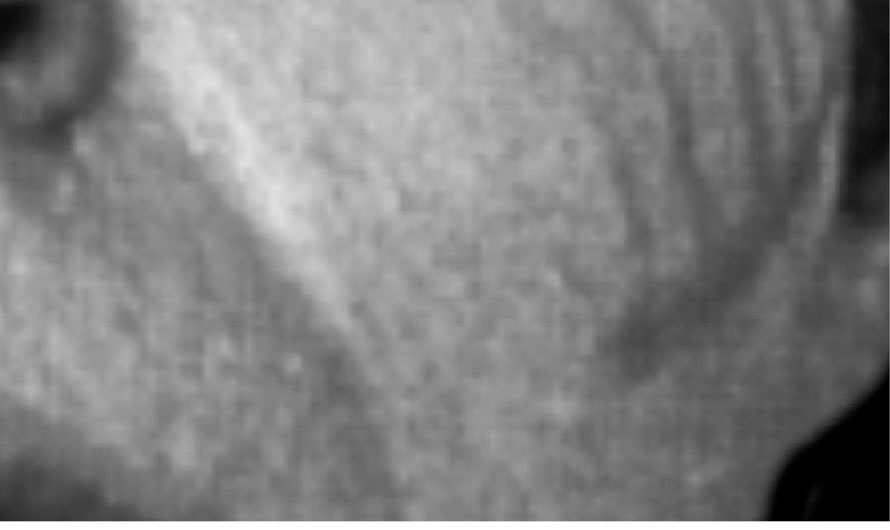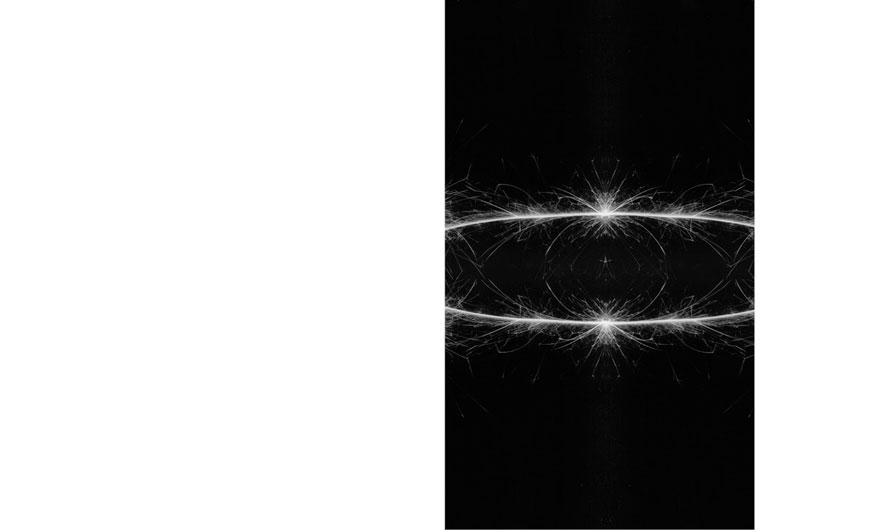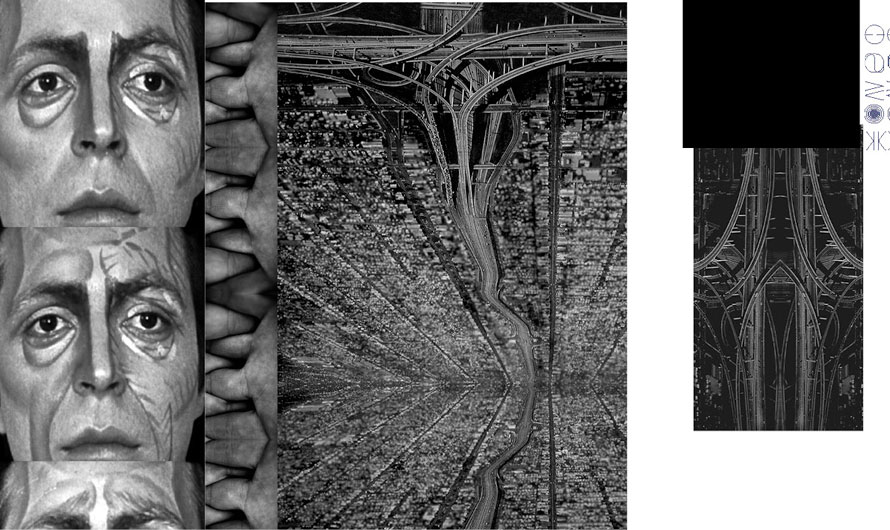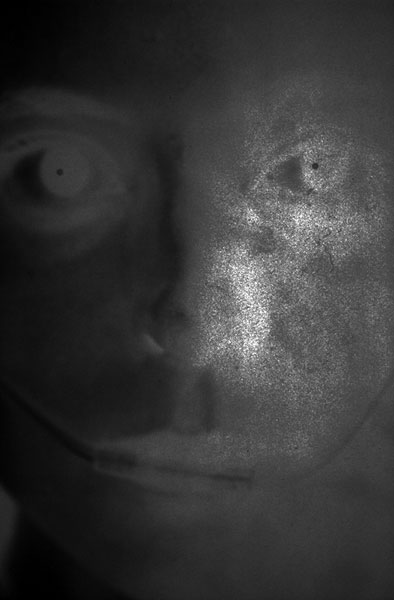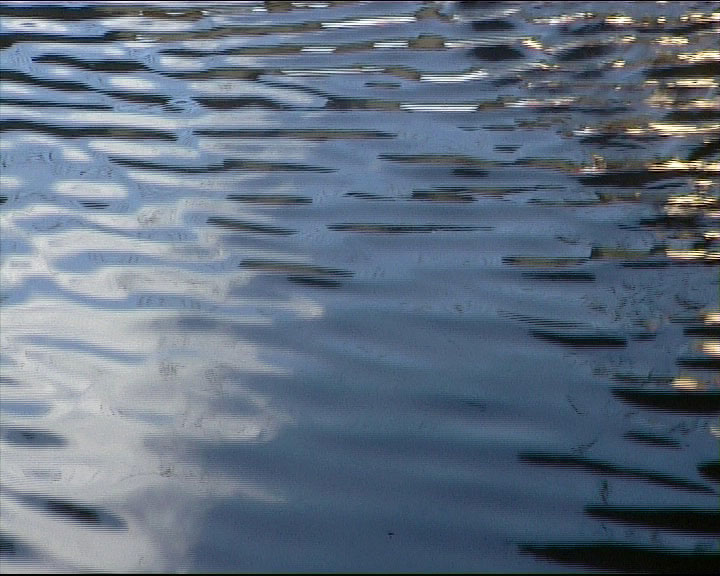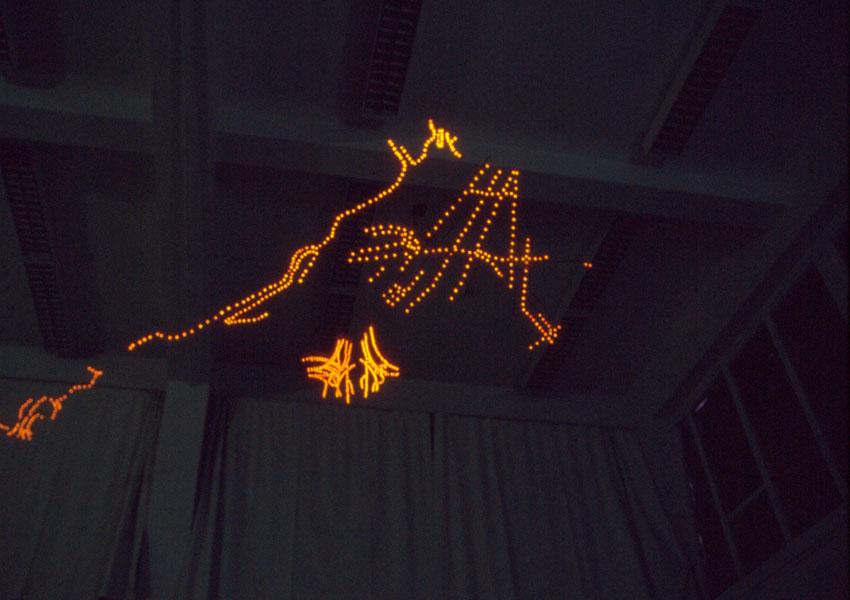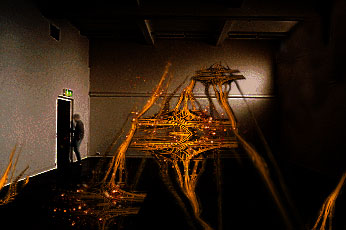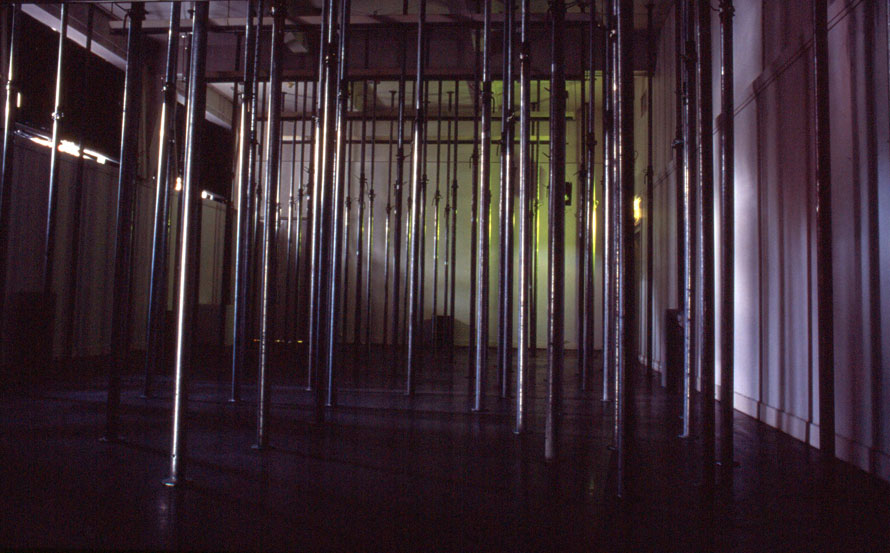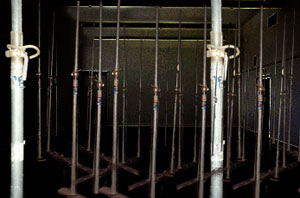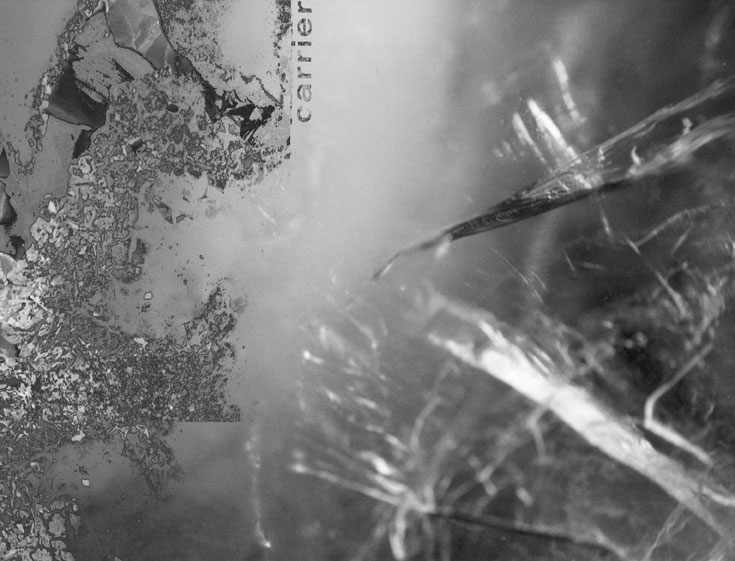1min 28secs
Carrier 2000
Prosjektrom, Kunstnernes Hus, Olso.
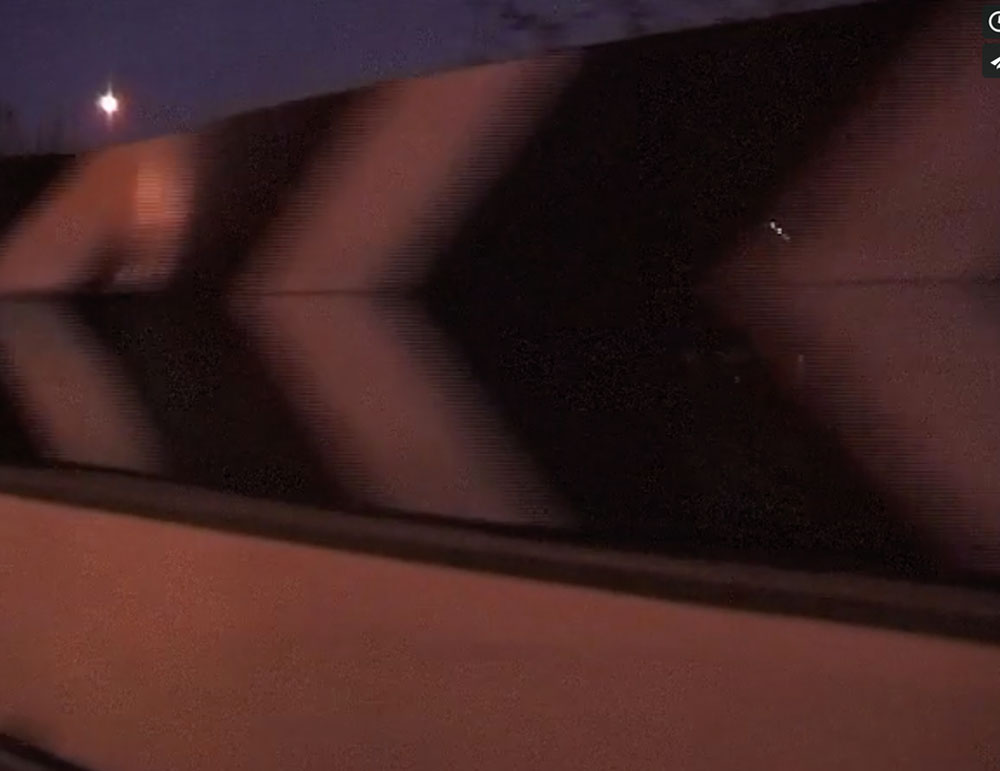
02 Round The Game video loop
1min 55secs
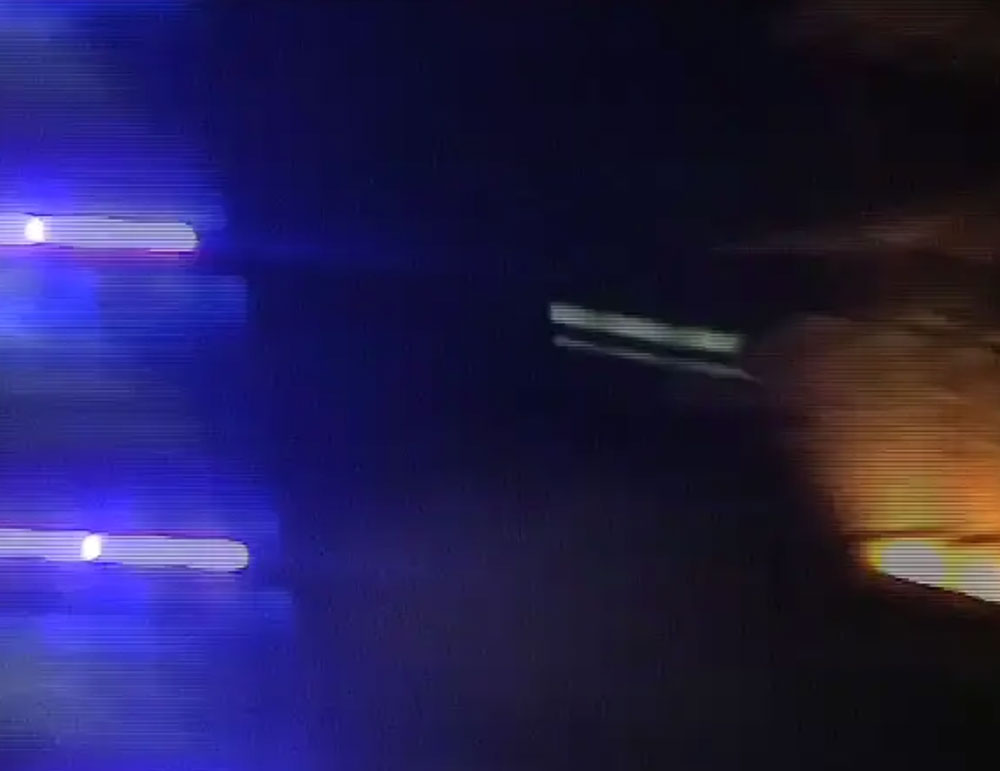
03 Fairtech video loop
4mins 33secs
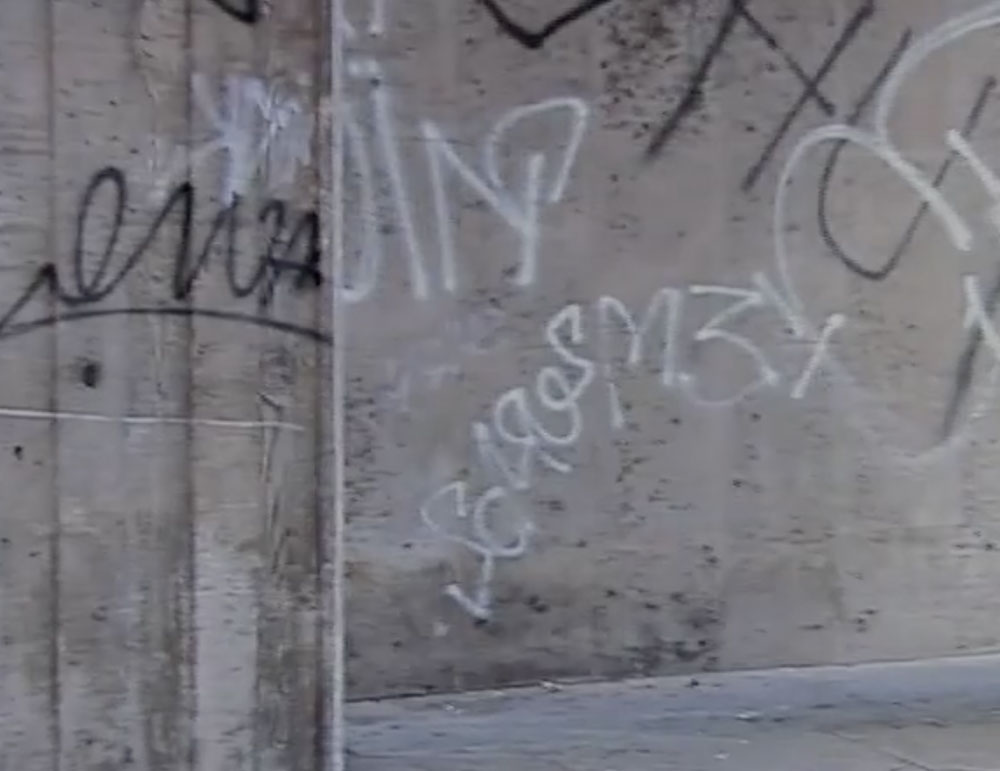
04 Ritual video loop
1min 12secs
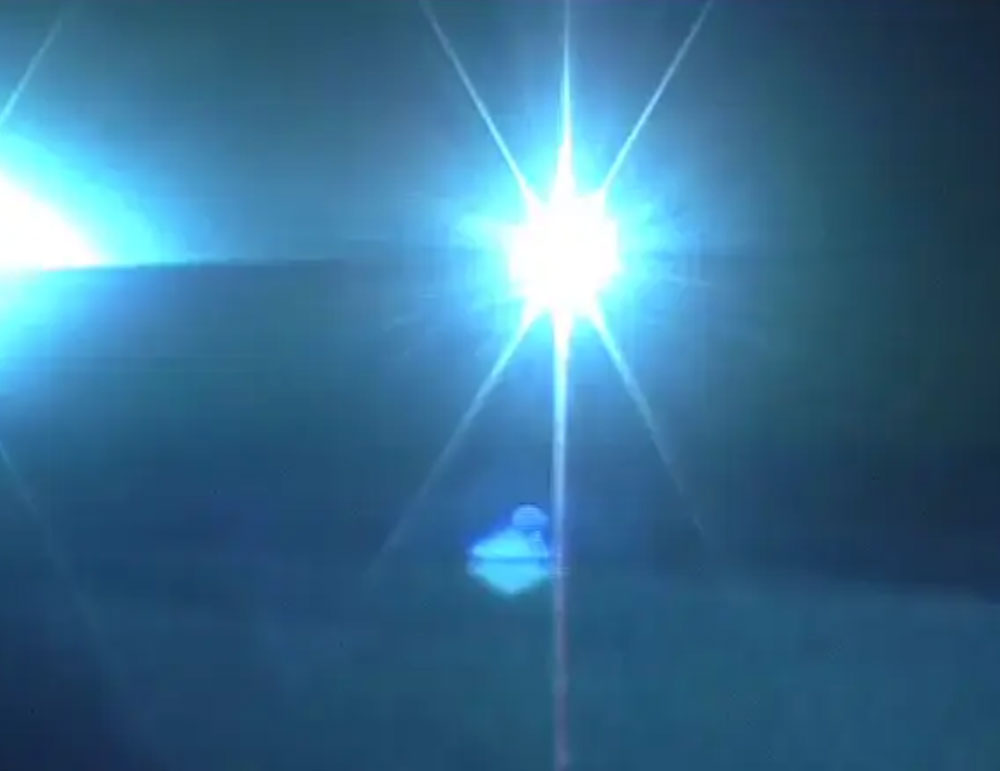
05 Crush video loop
5mins 15secs
Carrier catalogue. Click an image to expand
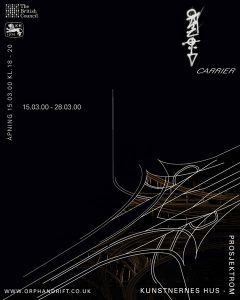 Carrier was a four room installation, itself a loop – consisting of a scaffolding maze room, mirroring tvs playing speeding shadowy static, a room of suspended glowing diode geometries and one of three screens playing video loops, all experienced in the dark, all mesmerizing and disorientating.
Carrier was a four room installation, itself a loop – consisting of a scaffolding maze room, mirroring tvs playing speeding shadowy static, a room of suspended glowing diode geometries and one of three screens playing video loops, all experienced in the dark, all mesmerizing and disorientating.
An accompanying pamphlet catalogue aimed to replicate the sensation of disorientation in 2D form, being a series of images relating to the physical experience of navigating the four rooms. There is no contextualizing writing in the pamphlet.
Carrier was sponsored by the British Council and 0rphan Drift won the ‘Nordraaks Pris’ for 1999 for their work on this piece.
The video loops – ‘Round the Game’, ‘Fairtech’, ‘Ritual’ and ‘Crush’ – were the first 0rphan Drift work to be edited only from original filmed in the world material, rather than the mixture of sampled and filmed layers and textures, that comprised the 0D work of the 90’s.
Click on a title below to expand/collapse texts
0D exchanges preproduction Carrier:
Death star fixation:
A machinic spiderweb on who knows what drug, some digital drug, filling a space like a maze, functioning like a 3D program, see it from many angles depending on your position. This death star that we have been talking of making 3D in a space. It’s like a spaceship that is sentient and a killer and called: “rEtalliAti0n HuRts”.
This star in a space like the story of the spider on amphetamine and caffeine, its web looking like the machine-made Death star, machine on drugs. So perfect, so fucked. And I am hooked on stars. And some sort of film set object that teases you into believing in something that should be there but it’s relying on your ability to believe and let yourself get teased. Starwars and the ship planet.
All those sets that are for effect and have nothing behind them. Machine – or man- made objects pretending to be someplace else, perfect and impossible. Sets. Nothing there. Just surface. The 3 millimetres of surface that you can see and makes you think you know what’s behind it. Then there is nothing behind – like a death star. But there is something behind the surface if you make it up yourself – and you always do.
Sets: the fact that they suck you in / convince you totally for that moment but when you turn round its not real or you always knew that it’s not but it affects you as if it were, and even more than reality could!
The 3D version of the death star.
Although it should be 3D, it’s only that shape from the front or a few different angles, when you go to the back it looks like a mess –
but the face side of what we are planning has to be so perfect / more than perfect / totally gorgeous and addictive!
Carrier navigation. The video loops:
A maze, a labyrinth that doesn’t have a fixed scale or geometries.
A navigation tease. You don’t know when it switches between fiction and actual. You don’t know when something’s symbolic and when it’s a set for the thing you find yourself in. A game where the screen keeps bleeding out to you and in to its inside.
Flow . directional but also a mesh of possibilities.
Experience mesmerising and sense of self being dislocated.
Self diffused out into abstract pattern. As when in traffic and never seeing the overview, or any sense of beginning or ending.
In the show, we’re being presented experientially with wandering in these overviews of process and electric flow, where artificial has the same patterns as natural, at scales we’d never experience with our senses.
Only glimpsed when you ride a crowded motorway, or watch the city swarm from a tower block height.
In Carrier, everything comes out of dark, so there’s dislocation there too, As if things are suspended out of time or in deep abstract space. So there’s fear in you maybe, because you enter into no place.
The scaffolding room with the sounds. Should feel as if you’re in a grid and you don’t have the co ordinates, so you have to dissolve into it to navigate.
There’s a slightly gothic fear sexy thrill to the dark and the things suspended in it and the sound weaving its space through you.
Dissolution thrills, ghosts in parallel time dimensions hiding in the dark.
Hi All, Something really strange is going on here. Suddenly there are a lot of people and places that want 0.d information and documentation! Firstly, I spotted a note in an art magazine that 0rphan drift is taking part in a lecture seminar about art and theory at the Art Institute in Bergen (Bergens Kunstforening). It is called Nomadic Machines. I e-mailed the magazine to find a contact for the organizers as none of us have heard about this before. Today I got a call back from the woman doing this after faxing her. This is a mistake that we are put down as official participants (the magazine had printed one of her wish-list for the event). She worked hard to get 0.d contact numbers, she gave up after contacting Beaconsfield who said they didn’t have any idea of how to reach us. We are not taking part because of this but one artist has not responded to the invitation and she thinks maybe we can take their place.
I explained about art/ club visuals and that we are nomads geographically, categorically, personally, theoretically etc. She got quite keen.
What do we want to be for a while? Seems like from the different bits each of us are instigating, it is always many things, that interlock and influence each other…
Review ‘Billedkunst’, nr.3, 2000, by Christian Refsum, ‘Carrier’ by 0rphan drift.
THE UNDERWORLD AT KUNSTNERNES HUS.
The installation ‘Carrier’ is an intimate experiment in space and the sensation of space. One can recognize a lot of effects from the last 20 years of installation art; dark rooms, steel rods that trigger associations of a decaying industrial society. There are flashing video screens, uncomfortable sound effects that seem unpleasantly close or as if they come from a different place. All the rooms seem relatively independent but all block out light and give a confined feeling. And they all trigger electronic tensions. One can think of separate zones in a coal-mine or underworld, a place where there is no organic life or form, only matt planes, stone, metal, electronic flashing signals and sound fragments, either static or in a mechanic loop.
This kind of installation art got shaped in the changes from the industrial to post-industrial society. Contemporary art exists as a row of parallel genres and ways of expressions, that in a given period represent something new, but after a while will develop its own codes that have a relatively independent dynamic. ‘Carrier’ shows that this is also the case with the 80’s a bit more ‘rock-n-roll’ and more ‘technofied’ installation art. ‘Carrier’ makes this medium of expression readable again, but it works also as aesthetisized contemporary art. It is an immediate experience of the atmospheric and meditative potential of the space.
In the first room of the installation a forest of metal rods are placed in tension between floor and ceiling, as if trying to prevent the ceiling from falling- or to push it upwards. One is led through the forest that apparently only has one function: to prevent the room from falling in on us. If you continue through the metal rods, you come to the next dark room, where two grey TV-screens are placed diagonally facing towards each other from corners. The TV images first look like static, but after a while one discovers shapes and movements that are hard to define. Something is happening, but so fast it is hard to see it. On the way to the second large room of the show one meets a reflection of a dragon-like formation of red points of light that are suspended from the large rooms ceiling. Apart from this the room is empty, dark and quiet. In the last room, on the way out- or on the way in again – there are three parallel video-projections, each on a wall.
The video projections underline the circular dynamic the show puts the audience in. In two of the films (maybe also the last?) the camera is turning around its own axis. In one of them the camera is turning down in a subway-like stone landscape with graffiti. The camera slides across the same stone edges again and again without offering an overall image. In the other projection the camera is rotating around a large playground. One sees the girders, the walls , then the pitch, then the running field with people that do anything else but run, then new girders, new walls etc. It is one endless take where the small people in the piece move slightly every time the camera makes them visible. The camera is registering mechanically what happens in the playground, and the people are hardly aware that they are being filmed. The camera is circling around them like a surveillance camera, and its impersonal gaze after a while becomes the viewers. The effect becomes contrary to the rest of the installation. In the other rooms we find ourselves in separate zones, without a sense of what’s happening outside of it. The camera eye that records the playground marks a different kind of outsideness, but this is again blindly directed towards its own axis. Hence both the outside and the inside perspective seem centripetal. It is curling up in a circle. After this marking of a circular perspective, one walks through the installation again – and again- before choosing to walk out into the light.
Report on project “Carrier” at Kunstnernes Hus, Oslo.
Pre-production:
The ideas for this work started as a continuation of previous work involving the experience of space in exhibitions, playing with fictional content in work and filmic/film set references as well as considering the environment of Oslo and the dynamics of this city. Therefore in the first stages of this work, we discussed with the Oslo based artists, issues concerning the city (from social activities to transport systems).
The actual rigging and installment at Kunstnernes Hus took two weeks and involved both London and Oslo based 0d members. We had a lot of help from local connections with transportation, low cost accomodation, heavy labour, welding and the making of certain electronic components.
During the installation we had to resolve the problem of the light leaks made by the “Emergency Exit” signs. Since there was no way of avoiding this light, (due to fire and safety regulations), it was decided to use the signs as part of a guidance system for the audience. We photographed the signs and placed several copies around the space as a guide.
We completed the work and the show opened at 6.00 pm on the 15th March. Representatives of the British Embassy and British Council were present. The newspaper “Aftenposten” and the TV-station “Metropol” arrived by invitation for a press conference, resulting in both a newspaper article and a 3 minute TV clip with further promotion by Inghild Karlsen filmed talking in the TV studio. The series of events at Kunstnernes Hus in the “Prosjektrom” had previously received little media attention.
To initiate a production like “Carrier” for the first time in Norway has been very positive. In the Oslo art scene environment this show was unusual and sometimes challenging to the audience. Although there were questions and confusion at times, we were very encouraged by the respect that we got doing the work and the genuine intrigue that many of the viewers showed. Compared to earlier productions by Orphan drift in England, the practical side of the production seemed to be easier to complete in Oslo. Shorter distances, closer contacts and a close knit and helpful creative community made a notable difference.
0rphan drift received the “Nordraaks Pris for 1999”, for their work on “Carrier”.
